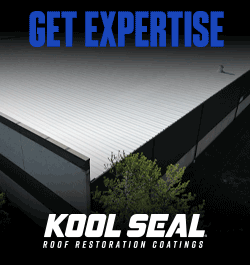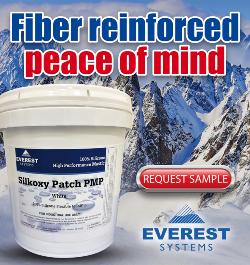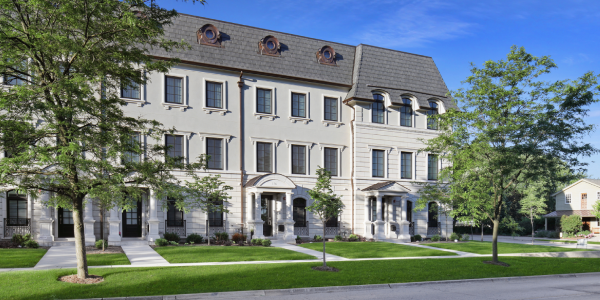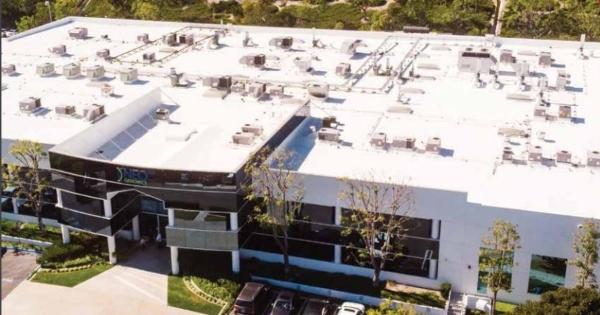Case Study: Arizona State University’s Sustainable Innovation Hub

By ROCKWOOL.
University known for innovation turns to ROCKWOOL to help obtain sustainability initiatives.
Arizona State University’s Interdisciplinary Science and Technology Building 7 reflects the innovation that the school is known for. The newest high-performance research facility represents the school’s commitment to sustainability in being the home to Global Futures, the Julie Ann Wrigley Global Institute of Sustainability, the Rob and Melani Walton Sustainability Solutions Service, School of Sustainability and the Institute of Human Origins, but also represents it in its construction.
The 281,000 sq ft building will also house numerous classrooms, a 389-seat presentation hall as well as public outreach and exhibit spaces. ISTB 7 will also have research labs for biological sciences, engineering, life sciences and sustainability. Dry lab space may include computing, cybersecurity, engineering design and fabrication, and robotics.
The goal
Sustainability is the common theme in this project, not just in its function as an education and research center, but in its design and construction as well. The building is designed to meet specifications for LEED Gold at a minimum, and possibly Platinum.
The challenge
The building designers were challenged with reflecting the innovation that is central to the new research center in its visual design without sacrificing the performance required from various assemblies to support the sustainability goals.
For example, the unique geometric façade included a system of overlapping glass fiber reinforced concrete (GFRC) panels with open joints, installed over the backup wall behind it; it would be necessary to design this open joint assembly in such a way as to ensure the performance of the building’s envelope while being exposed to the elements, all while maintaining its aesthetic appeal.
The solution
Several strategies were used in the construction of the building to help reach its sustainability targets, including the selection of steel framing with post- and consumer recycled content and innovative voided concrete slab technology. And when possible, local suppliers for materials, including gypsum boards produced in the Phoenix area, were used to reduce the carbon footprint of the construction.
When it came to the building’s envelope, Cavityrock Black rigid insulation board was eventually specified after other approaches, including an extensive insulated metal panel system, failed to meet the unique challenges presented by the open-joint facade. “Cavityrock Black fit the bill for so many reasons,” says Cameron Geske, Project Manager for commercial specialty contractor MKB. “We had worked with ROCKWOOL stone wool insulation on past projects and knew it would meet our needs for consistent R-value and superior thermal performance, as well as its fire resistant and sound insulation properties.” Cavityrock and other rigid boards used in exterior continuous insulation are also frequently specified by contractors like Geske because they are relatively easy to install.
Cavityrock Black went even further, as Geske’s team was able to install it under the open-joint cladding knowing it would not be damaged by exposure to rain and UV light. Building on the features and benefits of original Cavityrock, Cavityrock Black also offered the project’s architects and builders the clean visual aesthetic they wanted in the open-joint system. “No one wants to see the insulation through the seams in the façade,” adds Geske. “The thin black facer on the insulation boards meant we didn’t need to apply another layer to cover up the board; it was an efficient and effective solution.”
The unique feature of Cavityrock Black is the bonded black mat fleece facing that leaves the exposed wall assembly with crisp, black lines. It has also been designed to stand up to exposure to the elements, including heat, and UV rays, and has a flame spread index and smoke development index lower than other commonly used black scrim materials. And because this product is an extension of the original Cavityrock, it offers the same superior long-term thermal performance (R4.3/inch).
Learn more about ROCKWOOL in their RoofersCoffeeShop® Directory or visit rockwool.com.
Original article source: ROCKWOOL





















Comments
Leave a Reply
Have an account? Login to leave a comment!
Sign In